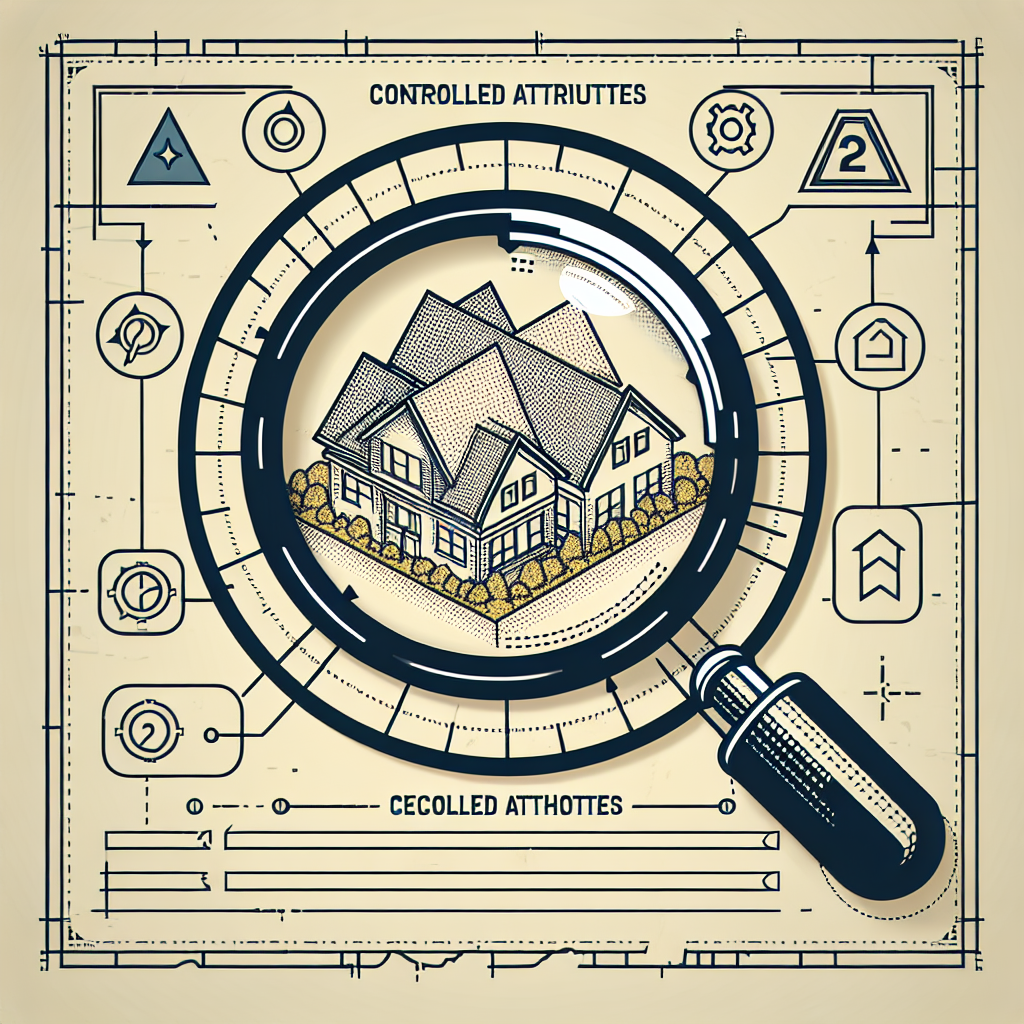Top Stories
Real Estate Sector Embraces Standardized Property Attributes

As the real estate landscape evolves, the importance of standardized attributes in property assessments has gained significant traction. The second installment of the series on Guiding Property Standards explores controlled attributes, which are essential for ensuring consistency and clarity across various property evaluations.
Defining Controlled Attributes
Controlled attributes encompass specific characteristics of a property that can be systematically quantified. These attributes provide a framework for assessing a property’s value and potential for development. Key examples include:
– **Location**: Geographic positioning, accessibility to amenities, and proximity to transport hubs.
– **Size and Layout**: Square footage, site dimensions, zoning regulations, and the configuration of spaces.
– **Condition**: The property’s age, structural integrity, and any renovations.
– **Utilities and Infrastructure**: The availability of essential services such as water, electricity, and internet connectivity.
– **Compliance and Regulations**: Adherence to local building codes and environmental regulations.
The Significance of Controlled Attributes
Controlled attributes play a vital role in the real estate sector, serving several key functions:
1. **Standardization**: Establishing a common language for property characteristics helps standardize appraisal and assessment processes across diverse markets. This standardization enables effective communication among stakeholders, including appraisers and investors, allowing them to make informed decisions based on comparable data.
2. **Enhanced Valuation Accuracy**: Incorporating controlled attributes into property evaluations allows for more precise assessments. By quantifying physical characteristics and their influence on value, appraisers can minimize subjective bias, ensuring valuations reflect current market conditions. This accuracy is especially crucial in fluctuating markets.
3. **Facilitating Market Analysis**: Controlled attributes enable clearer market comparisons and trend analysis. Investors and developers can identify opportunities by examining properties with similar characteristics, leading to more informed investment decisions and risk assessments.
4. **Compliance and Risk Management**: Documenting controlled attributes aids property owners and managers in ensuring compliance with local regulations. Properties that align with established standards become more appealing to potential buyers and investors.
To effectively implement controlled attributes, real estate professionals can adopt several strategies:
– **Develop Comprehensive Data Lists**: Create detailed lists of controlled attributes tailored to specific asset classes and geographical areas. Regularly update these lists to reflect changes in market conditions and regulatory requirements.
– **Utilize Technology and Software**: Invest in property management software and appraisal tools to manage and analyze controlled attributes. Advanced algorithms can streamline data collection, offering insights that inform critical decision-making.
– **Train Staff and Stakeholders**: Provide training on the significance of controlled attributes to enhance organizational efficiency. Ensuring that all participants in the property assessment process understand the importance of accurate data collection supports standardization efforts.
– **Collaborate with Industry Professionals**: Engage with appraisers, consultants, and industry groups to share best practices regarding controlled attributes. Collaboration can foster the development of industry-wide standards, promoting a uniform approach to property assessment.
In conclusion, as the real estate industry continues to adapt, the role of controlled attributes is becoming increasingly crucial. By prioritizing these attributes, professionals can navigate market complexities with greater precision and clarity. The second installment of the Guiding Property Standards series underscores the importance of these elements in enhancing valuation accuracy, facilitating market analysis, and ensuring compliance.
Embracing controlled attributes is more than a procedural enhancement; it is a fundamental shift towards a more transparent and efficient real estate ecosystem. Looking ahead, adopting these guiding property standards will empower stakeholders to thrive in an ever-changing landscape, fostering growth and sustainability in the property market.
-

 Lifestyle5 months ago
Lifestyle5 months agoLibraries Challenge Rising E-Book Costs Amid Growing Demand
-

 Sports5 months ago
Sports5 months agoTyreek Hill Responds to Tua Tagovailoa’s Comments on Team Dynamics
-

 Sports5 months ago
Sports5 months agoLiverpool Secures Agreement to Sign Young Striker Will Wright
-

 Lifestyle5 months ago
Lifestyle5 months agoSave Your Split Tomatoes: Expert Tips for Gardeners
-

 Lifestyle5 months ago
Lifestyle5 months agoPrincess Beatrice’s Daughter Athena Joins Siblings at London Parade
-

 Science4 months ago
Science4 months agoSan Francisco Hosts Unique Contest to Identify “Performative Males”
-

 World5 months ago
World5 months agoWinter Storms Lash New South Wales with Snow, Flood Risks
-

 Science5 months ago
Science5 months agoTrump Administration Moves to Repeal Key Climate Regulation
-

 Business5 months ago
Business5 months agoSoFi Technologies Shares Slip 2% Following Insider Stock Sale
-

 Science5 months ago
Science5 months agoNew Tool Reveals Link Between Horse Coat Condition and Parasites
-

 Sports5 months ago
Sports5 months agoElon Musk Sculpture Travels From Utah to Yosemite National Park
-

 Science5 months ago
Science5 months agoNew Study Confirms Humans Transported Stonehenge Bluestones









